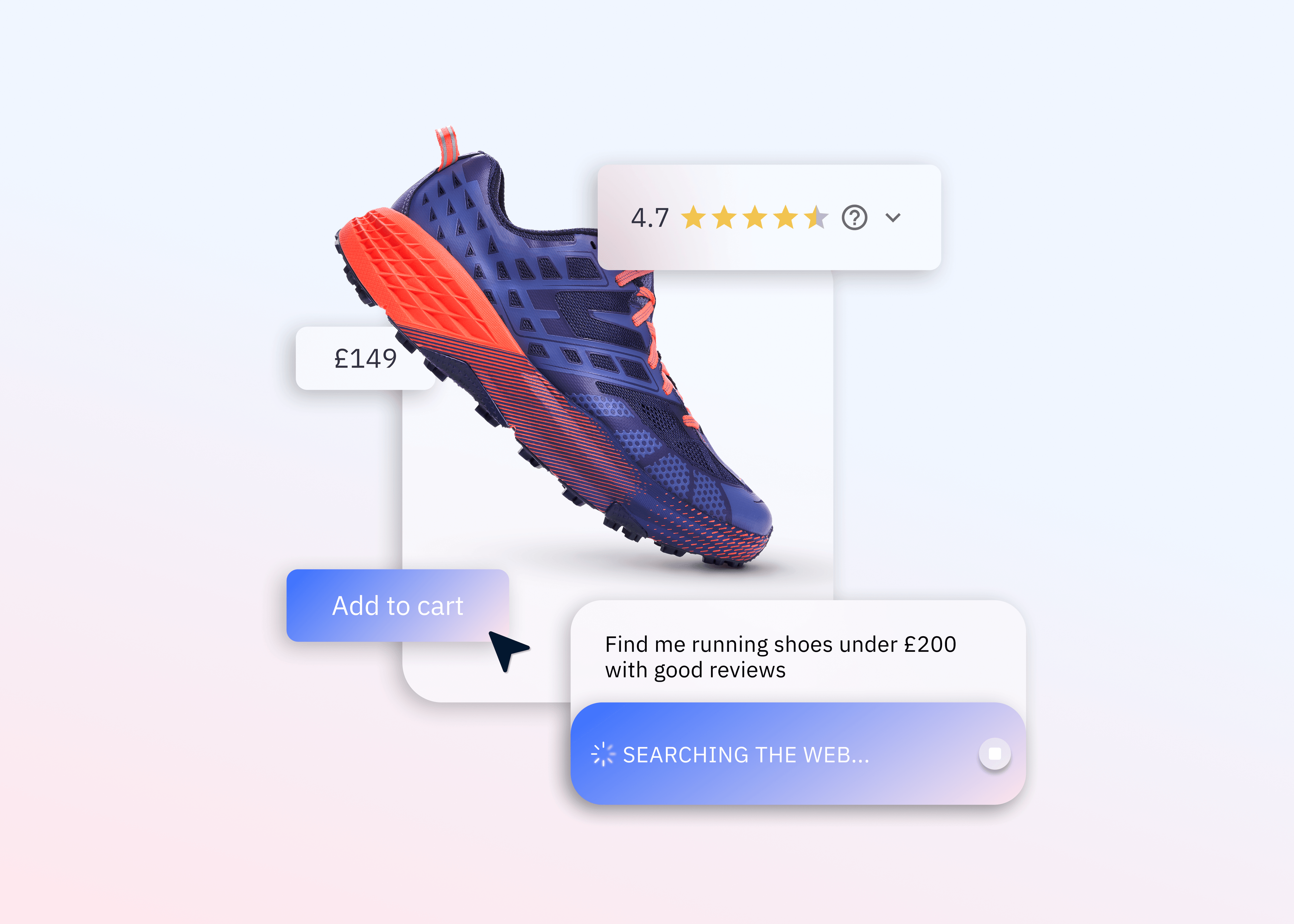Seller spotlight: How Larroudé is redefining luxury footwear through vertical integration and strategic marketplace expansion

In the luxury footwear market, premium pricing and exclusive distribution have long been the standard approach to building brand value. Larroudé challenges this model.
Founded by Marina and Ricardo Larroudé, the luxury footwear brand combines elegant design, competitive pricing and vertical integration — all while maintaining the exclusivity and brand control that luxury consumers expect.
Guilherme Matiello, executive director of sales and operations at Larroudé, shares how the brand is leveraging marketplace partnerships to drive international growth without compromising its carefully cultivated luxury positioning.
About Larroudé
Larroudé was born from Marina Larroudé's vision to create luxury footwear that offers more accessible prices without sacrificing quality or design. By investing in their own factory in Brazil, the brand has achieved production control, quality assurance and the agility to innovate rapidly.
With a strong visual identity and digital presence, Larroudé has gained international recognition and partnerships with premium retailers like Nordstrom and Saks.
Loading...
Mirakl: What sets Larroudé apart in the luxury footwear market?
Guilherme Matiello: Several factors differentiate us. First, our vertical integration — owning our own factory in Brazil ensures quality and agility that most luxury brands can't match.
Second, our competitive pricing allows us to offer luxury footwear at about half the price of traditional luxury brands.
We also prioritize design innovation with fast-paced launches and constant experimentation.
Finally, our hybrid distribution model combines direct eCommerce with premium retail partners such as Nordstrom and Saks, giving us the best of both worlds.
How Larroudé expanded into marketplaces
M: What drove your decision to expand beyond your traditional sales channels into marketplaces?
GM: The decision to expand into marketplaces came as a strategy to increase brand reach and visibility, leveraging the high traffic and established customer base of these platforms.
Marketplaces also allow for global sales scalability without the need for a local physical presence, optimizing resources and reducing risk.
Another key factor was the ability to use the existing infrastructure of these platforms — including logistics, payment systems and marketing — enabling faster, more efficient growth while maintaining brand positioning and experience.
M: What marketplaces do you sell on, and what are your future plans?
GM: We currently operate on Nordstrom. Looking ahead, we plan to expand into other premium marketplaces, establish exclusive partnerships and explore hybrid models that combine curation with brand control.
Maintaining luxury positioning across marketplaces
M: Larroudé has a very defined brand image and consistent look and feel. How do you maintain that luxury positioning across marketplaces?
GM: It starts with careful selection of premium-curated partners. We establish strict brand presentation guidelines covering imagery, copy and packaging.
We also ensure a luxury-level shopping and post-purchase experience at every touchpoint.
Importantly, we practice limited curation — not all products are listed on marketplaces. This allows us to maintain exclusivity while still reaching new audiences.
Finally, we continuously monitor compliance and brand image across all channels.
M: What unexpected outcomes have you seen since launching on marketplaces with Mirakl Connect?
GM: We've seen a strong brand discovery effect — many consumers who first encounter Larroudé through marketplaces later return to shop directly on our own eCommerce website, with higher average order value and loyalty.
Moreover, the granular data visibility offered by these platforms provides deep insights into SKU, region and channel performance, revealing valuable market preferences and opportunities.
The evolution of luxury brands’ channel strategy
M: As a leader and brand innovator, what’s your advice on finding and choosing the right marketplaces for a brand?
GM: My first advice would be to define your brand positioning and target audience. Then, analyze the marketplace's customer profile to ensure alignment.
From there, prioritize platforms with strong curation and brand control, and look closely at their logistics, technology and cost structure to understand the operational implications. Launch with a few SKUs and test performance before scaling.
Most importantly, ensure visibility and maintain consistent brand identity across all channels. Your marketplace presence should feel like a natural extension of your brand, not a compromise.
M: Looking ahead, how do you see the marketplace model evolving for luxury brands and what role will it play in Larroudé's future growth strategy?
GM: Marketplaces are evolving into true luxury curators, emphasizing refined experiences, personalized service and selective brand partnerships.
Co-branded models, premium logistics and accelerated geographic expansion are set to become key strategies. Omnichannel integration will also grow stronger, connecting owned stores, digital channels, and logistics into one seamless ecosystem.
For Larroudé, marketplaces will continue to drive growth and internationalization, expanding global visibility and reaching new audiences — all while preserving the brand's essence of luxury, exclusivity and quality.
The bottom line: Scaling without compromising brand integrity
Larroudé's journey demonstrates that luxury brands can successfully leverage marketplaces for growth without compromising brand integrity.
By maintaining strict curation standards, selecting premium partners carefully and leveraging the operational infrastructure of marketplace platforms, they've created a sustainable model for international expansion.
As the marketplace landscape continues to evolve toward more sophisticated luxury experiences, Larroudé's strategic approach offers valuable insights for premium brands looking to expand their reach while maintaining the exclusivity and quality that define luxury in the digital age.



